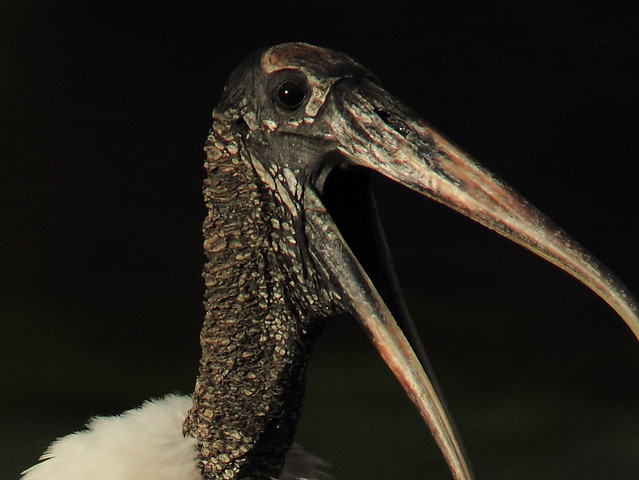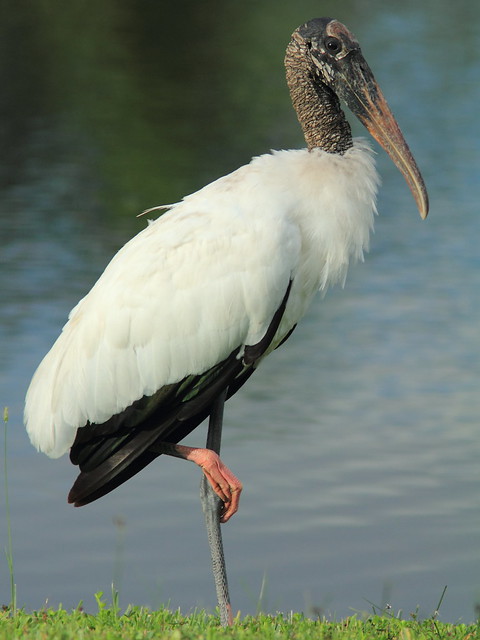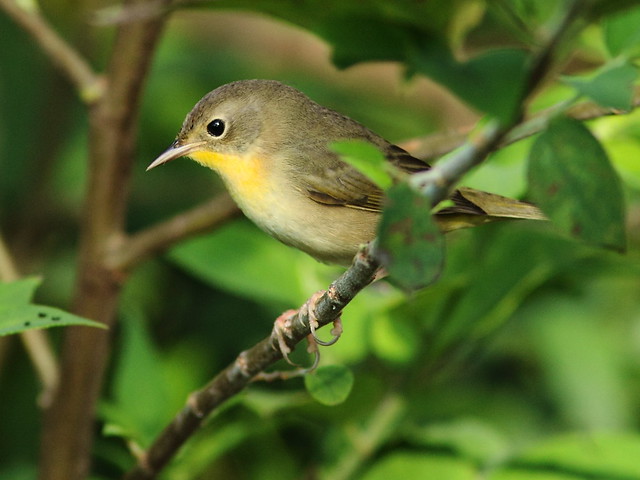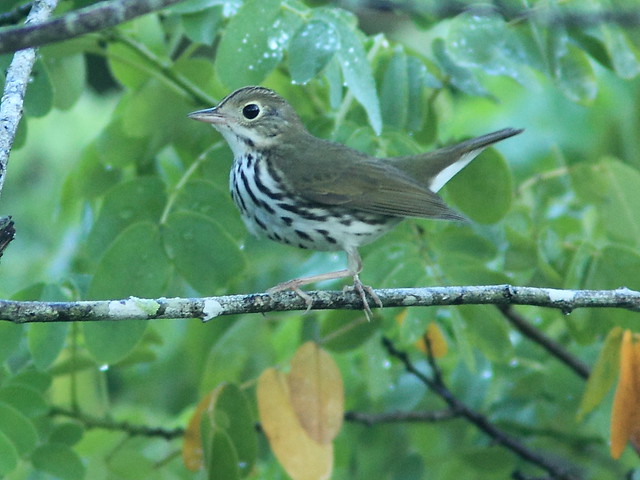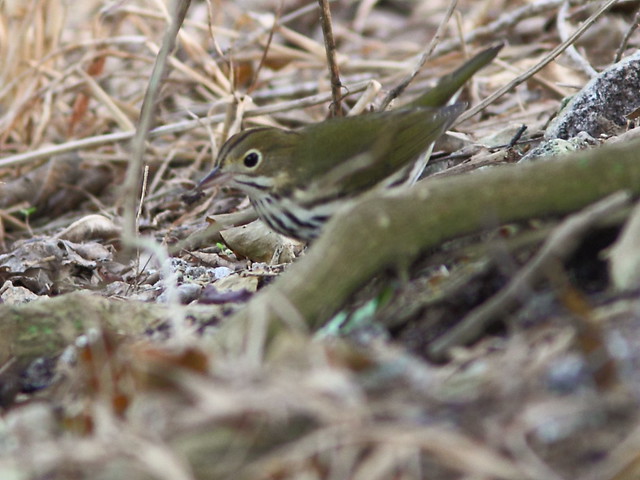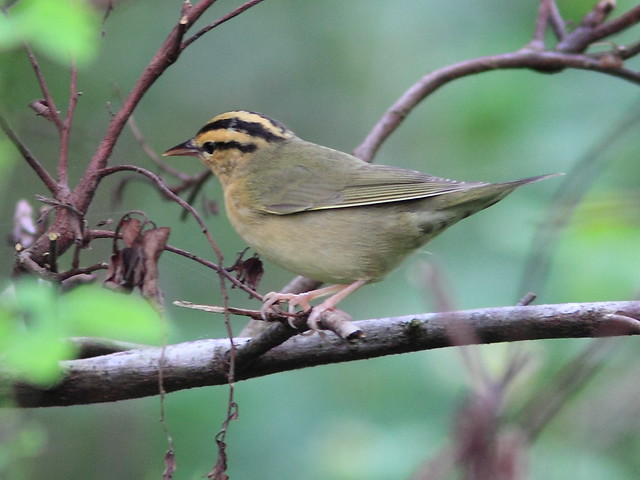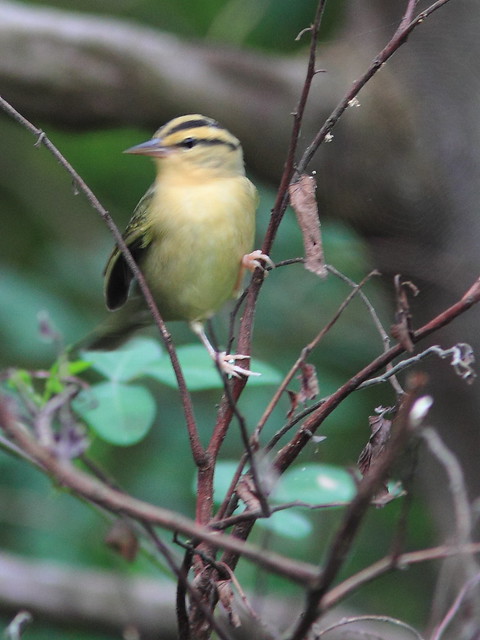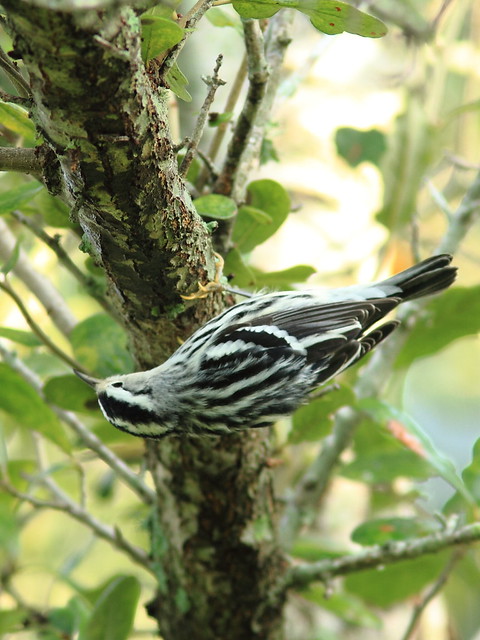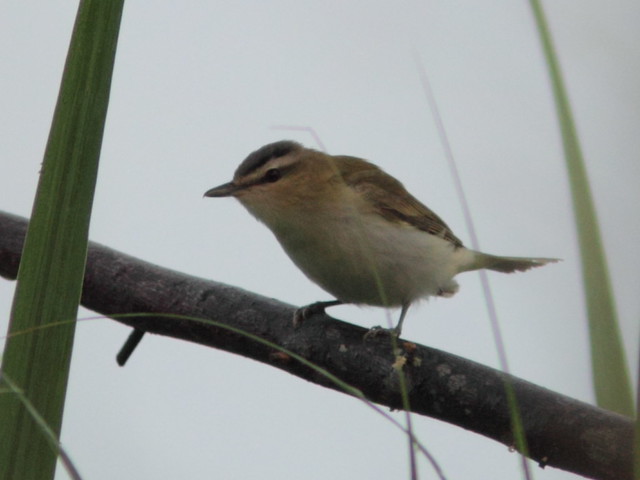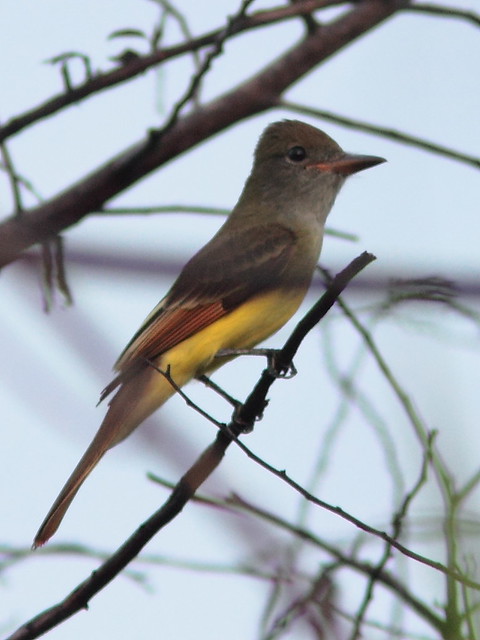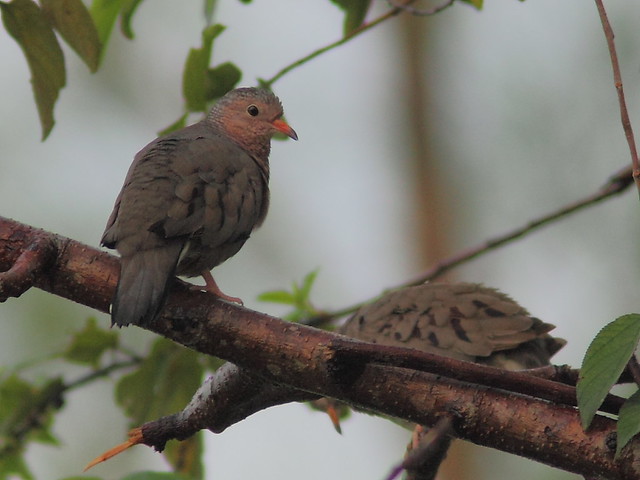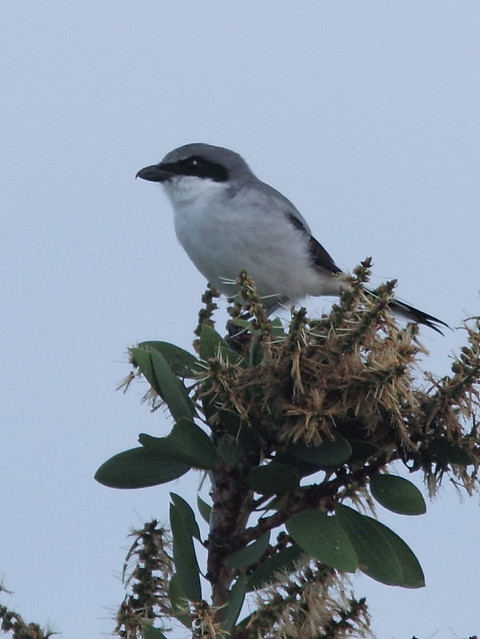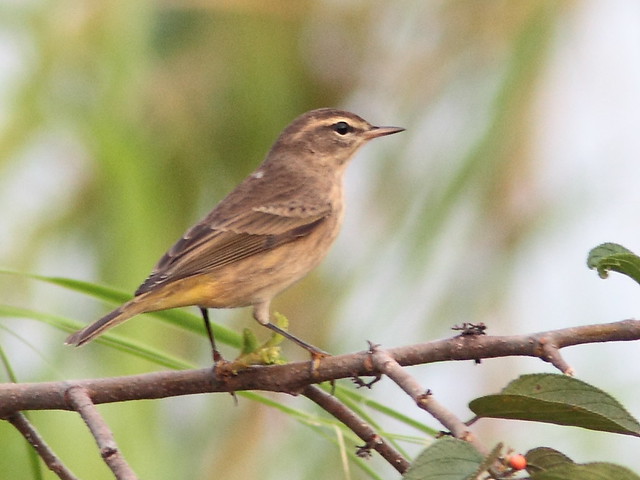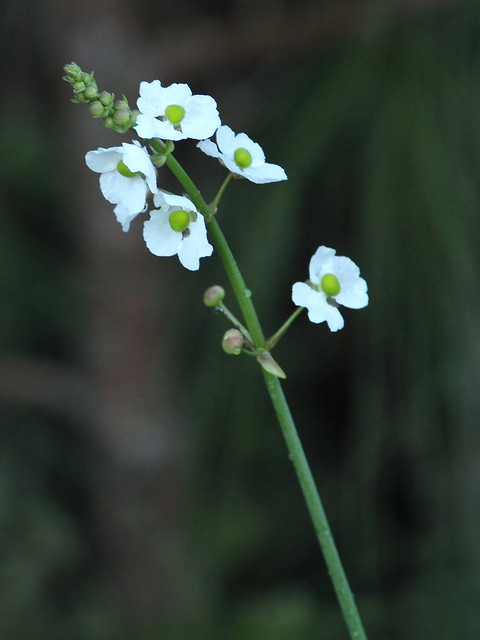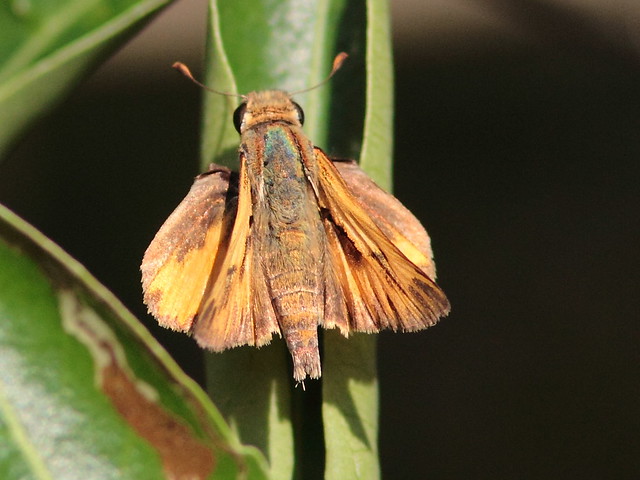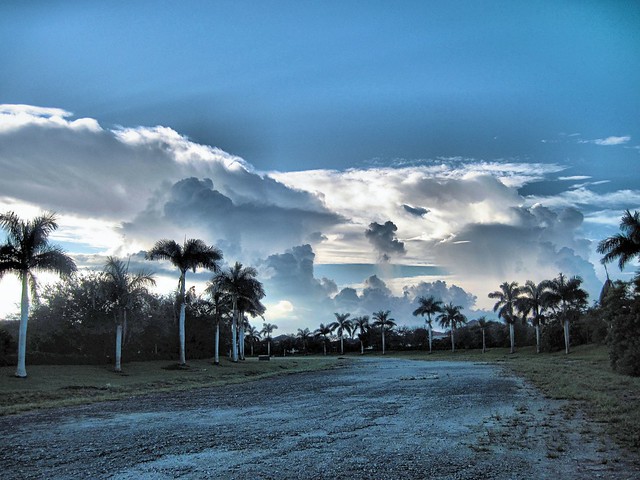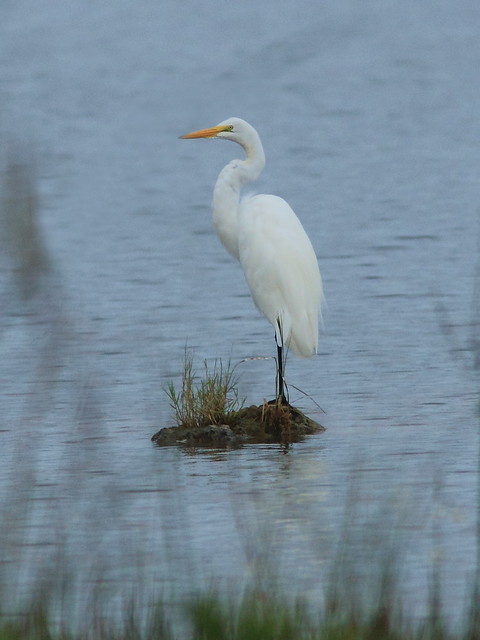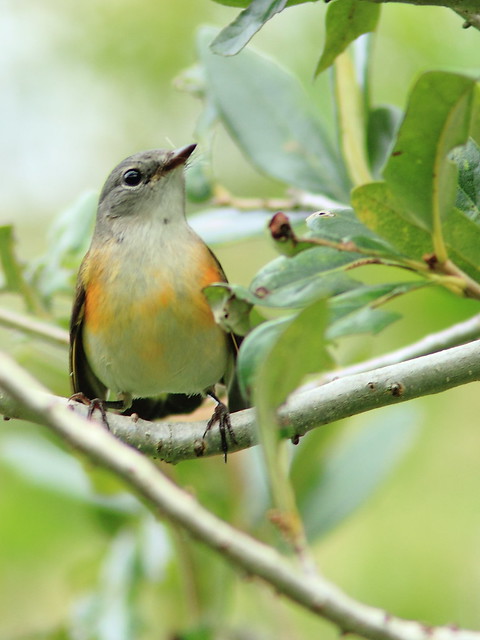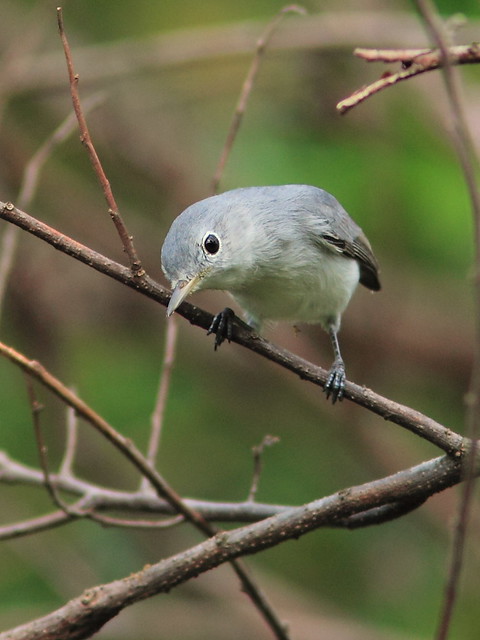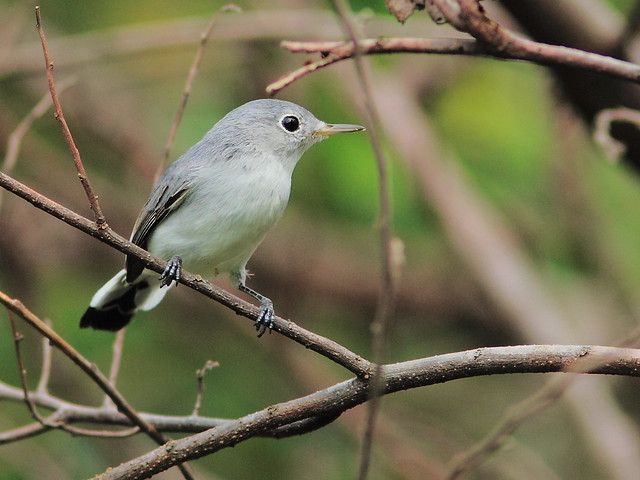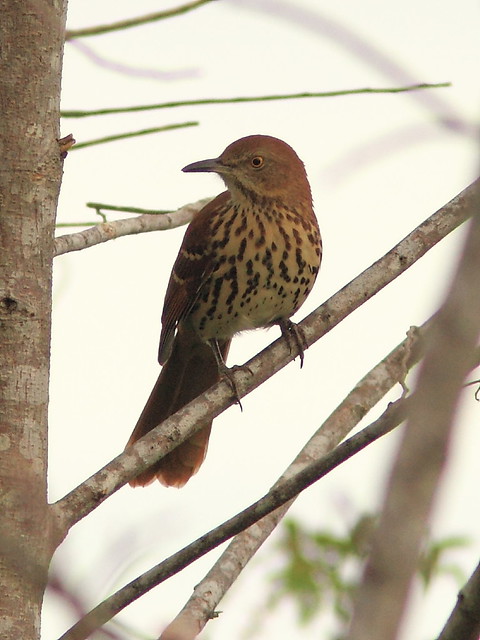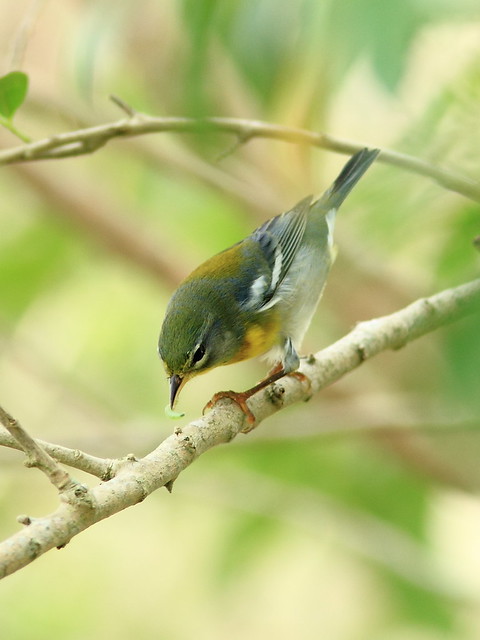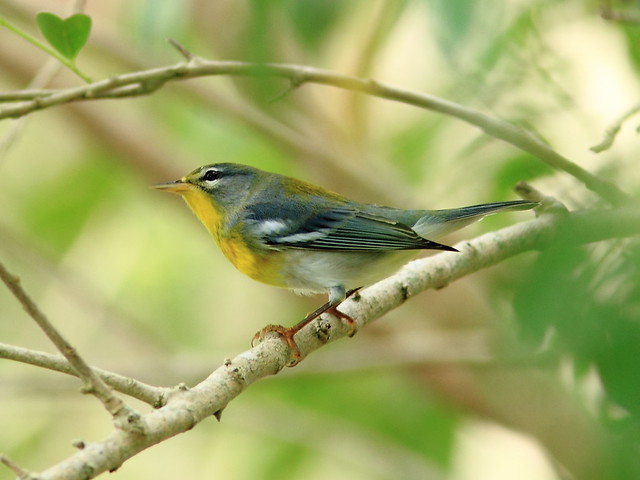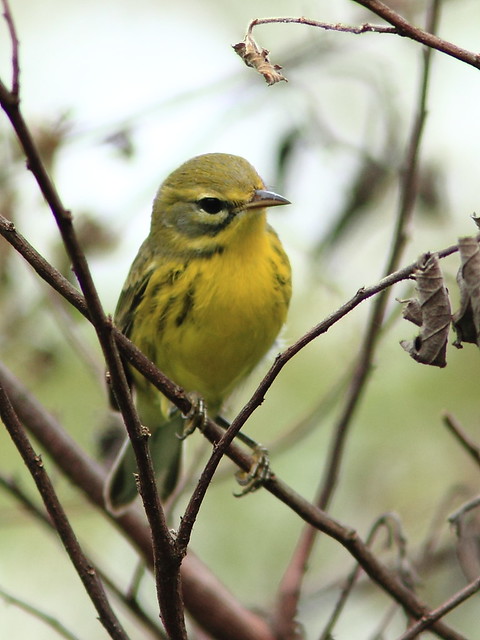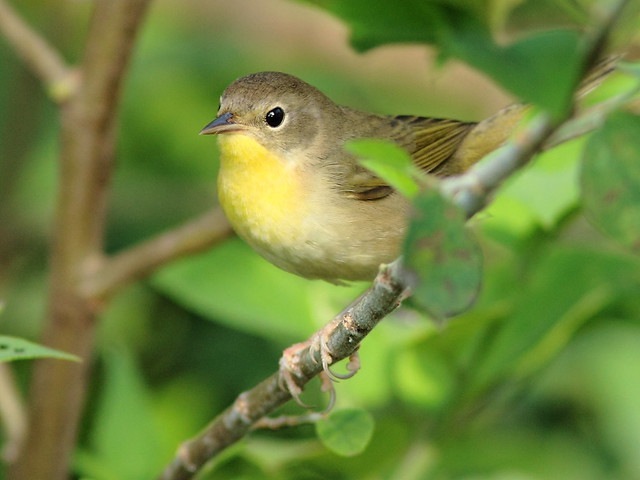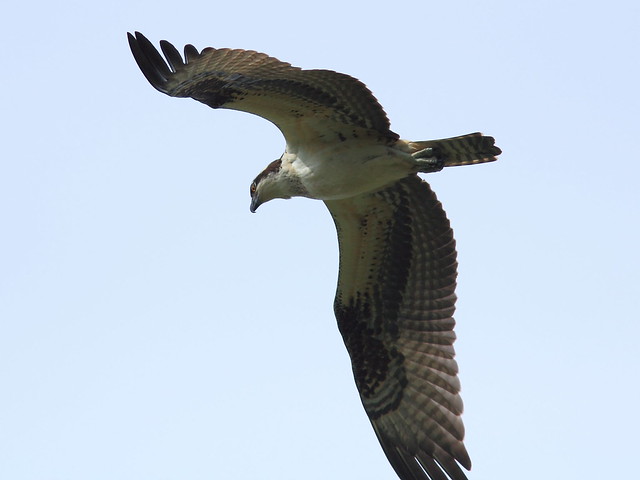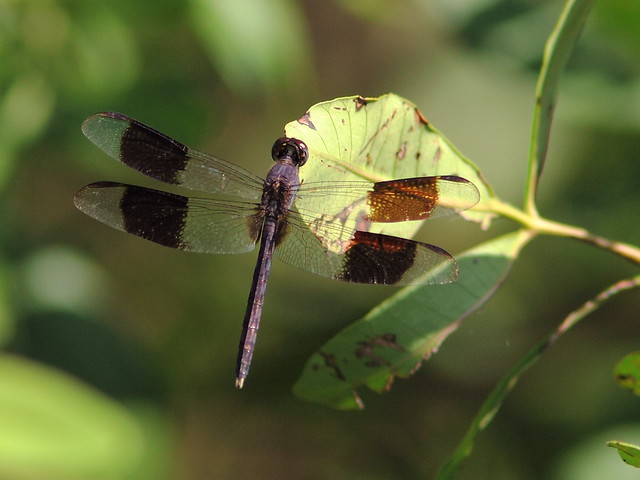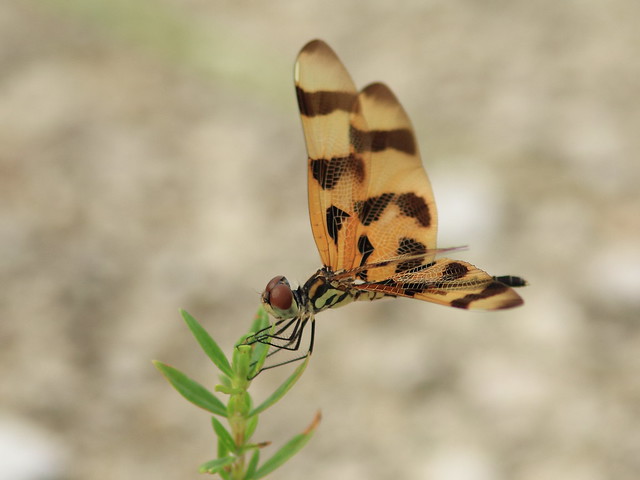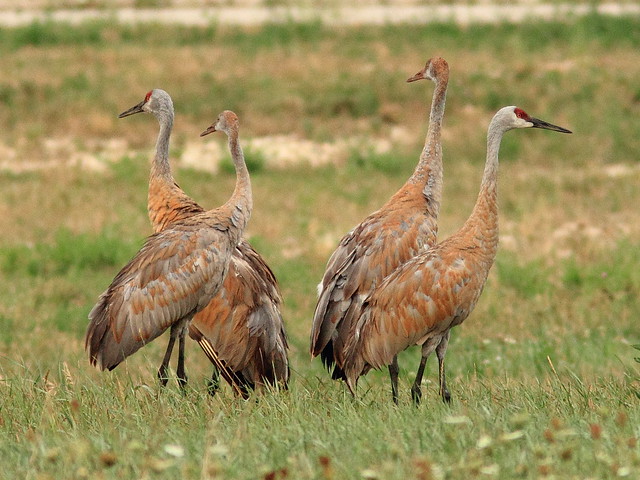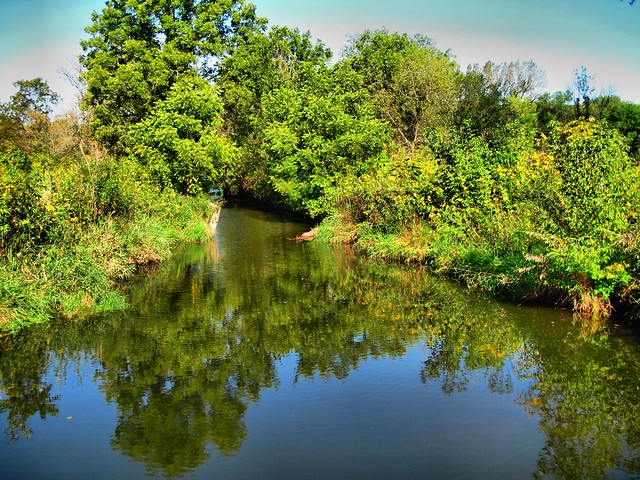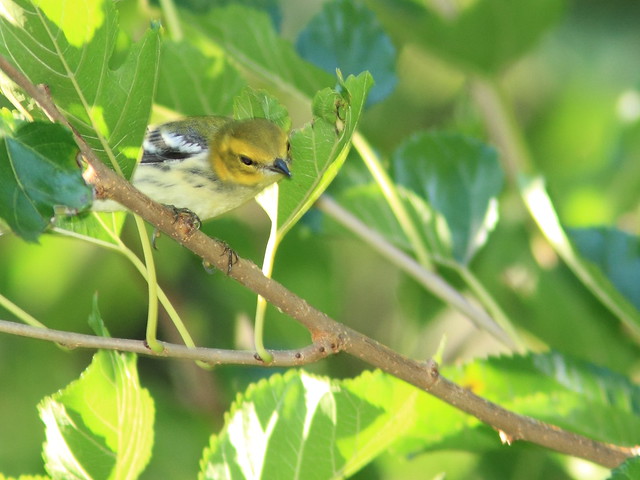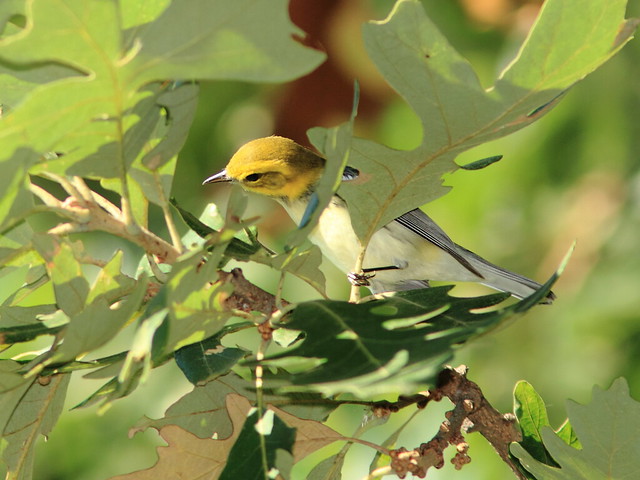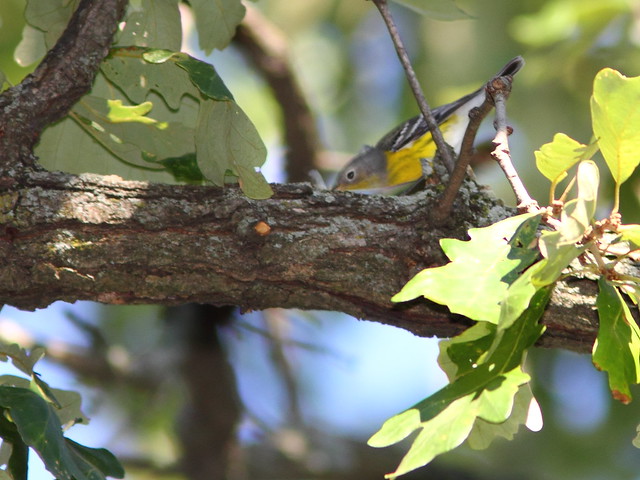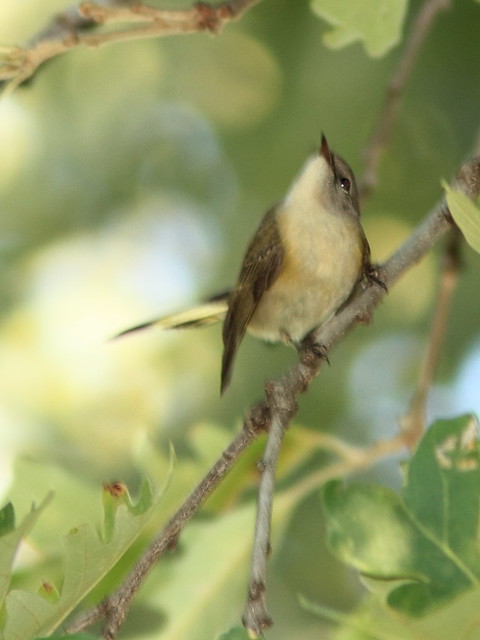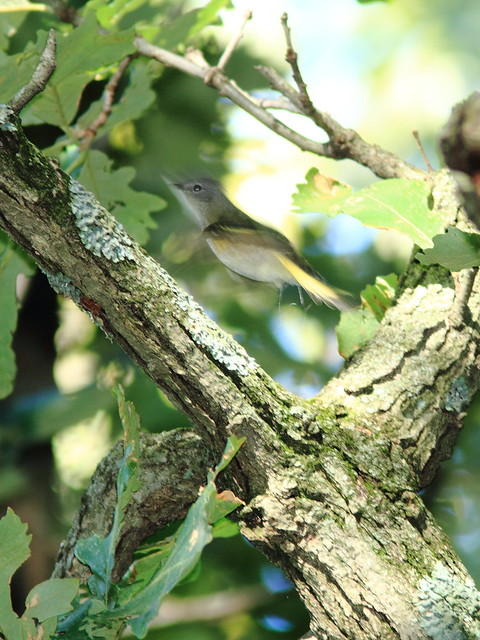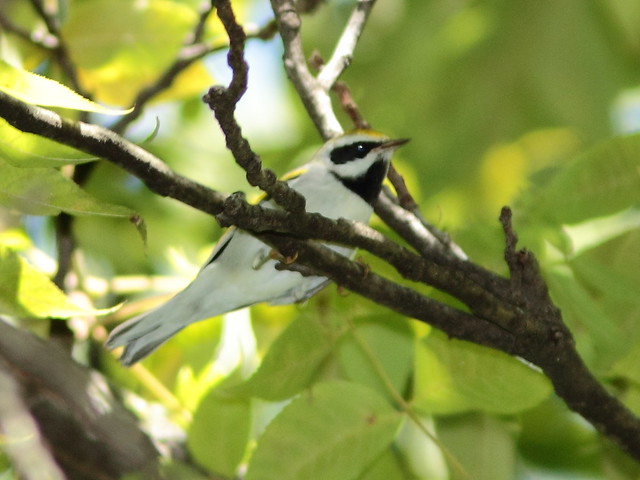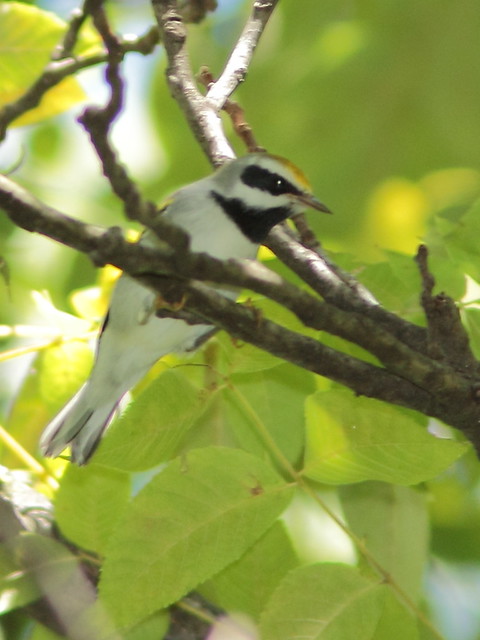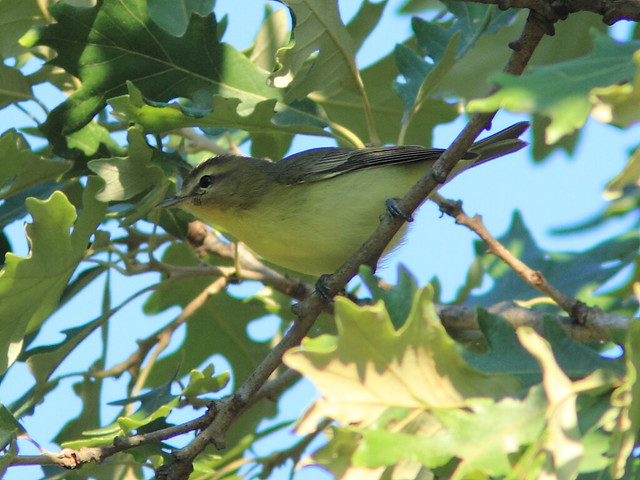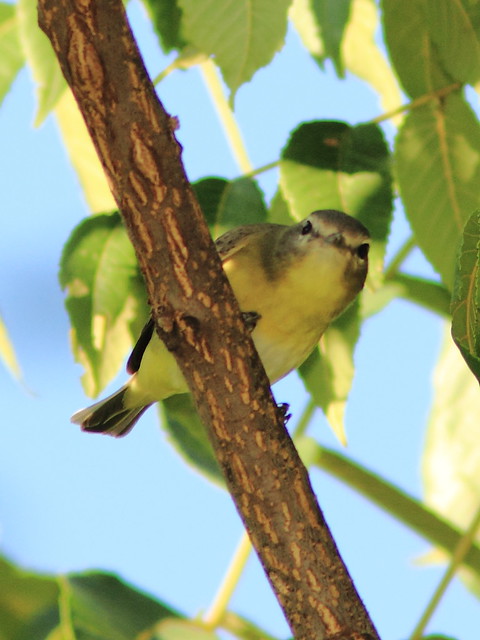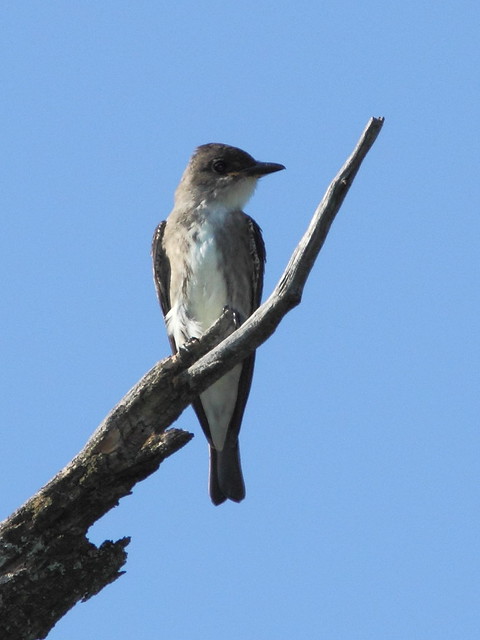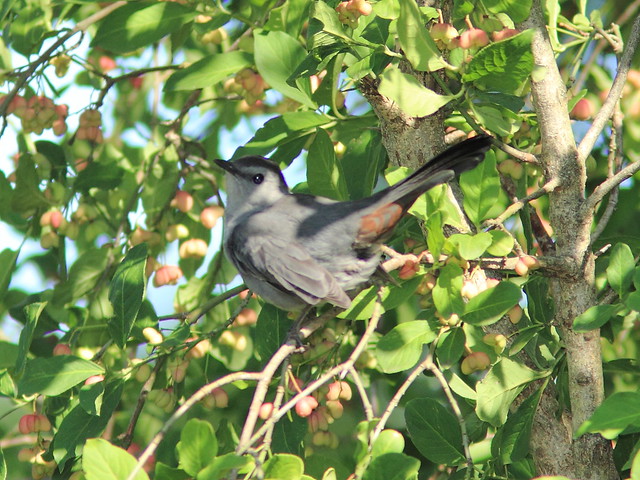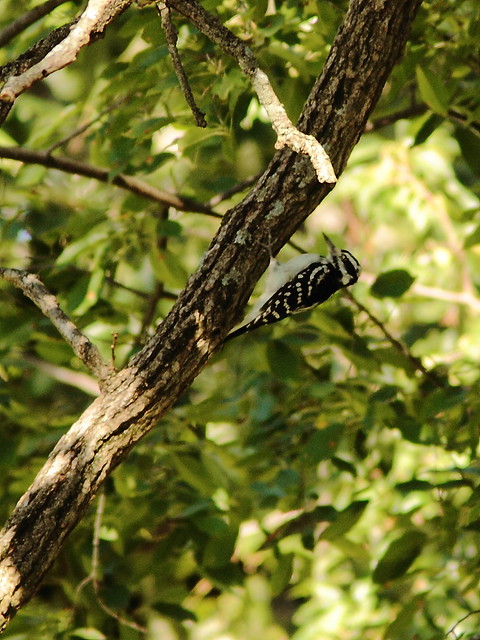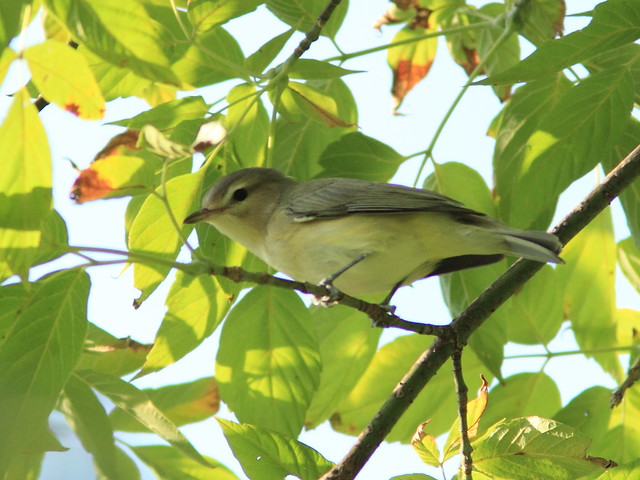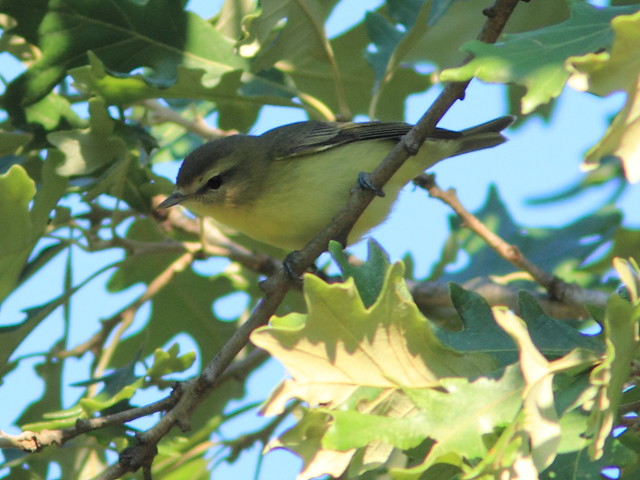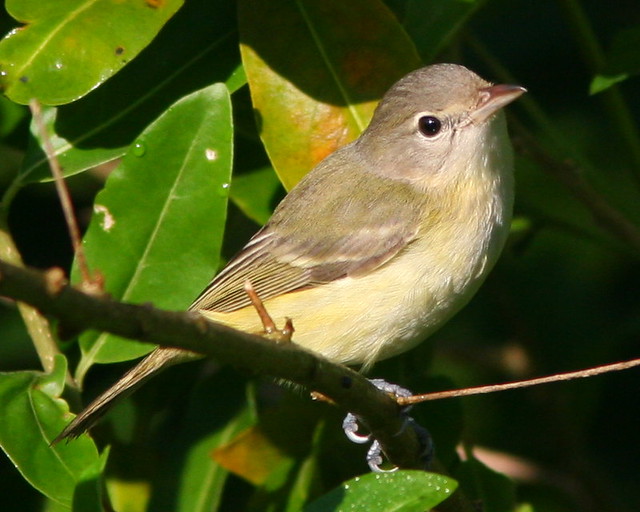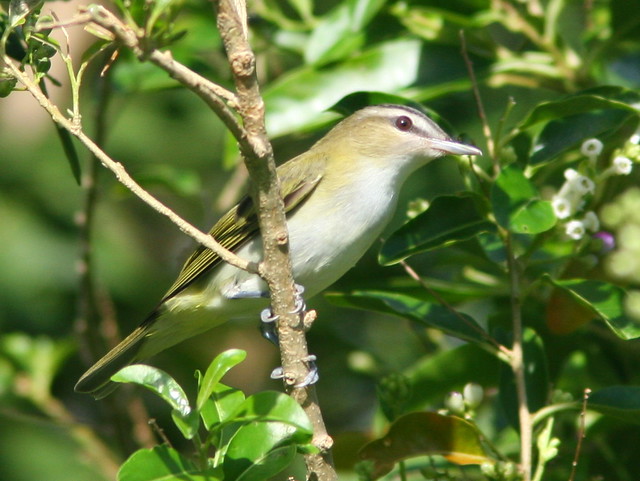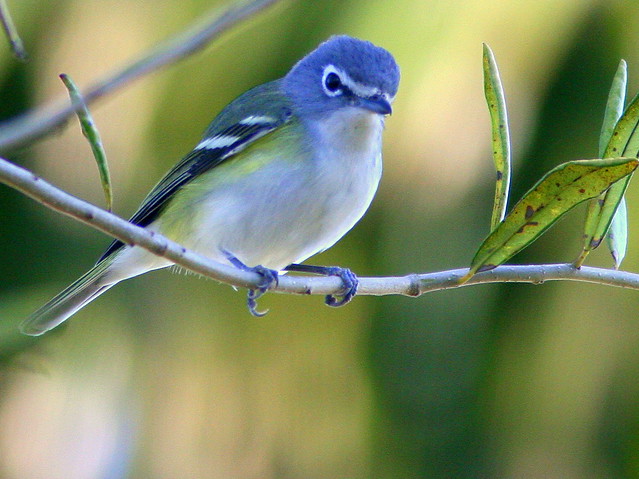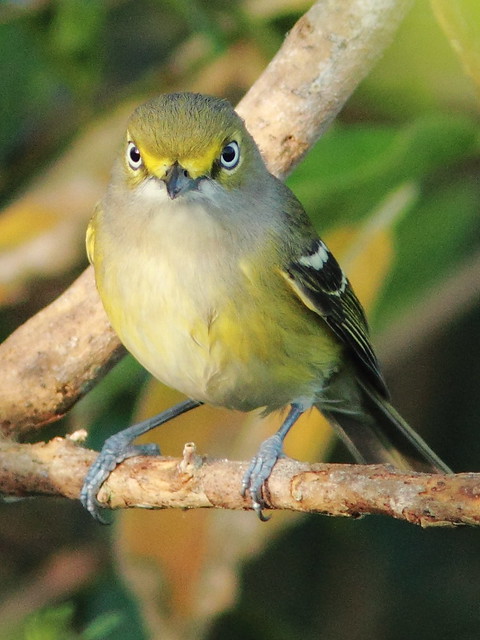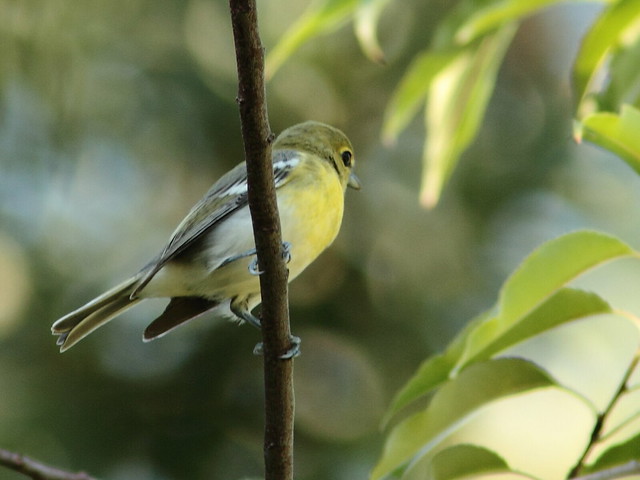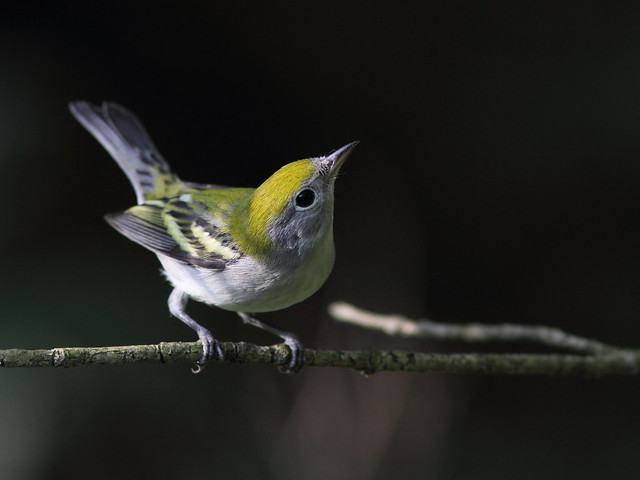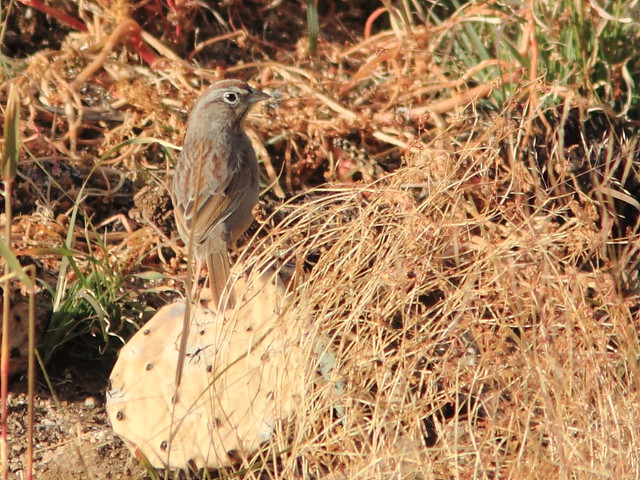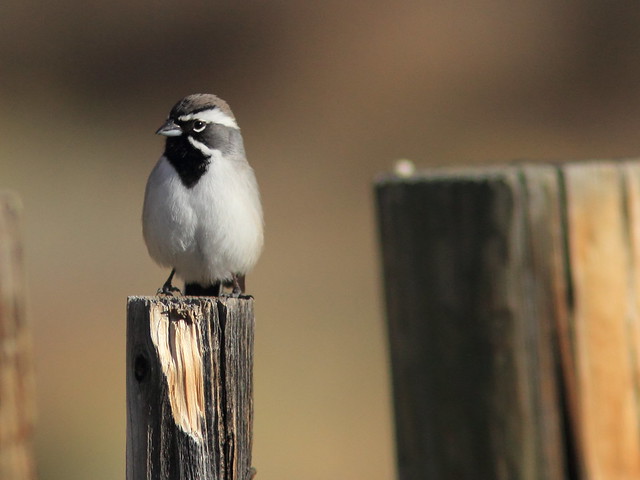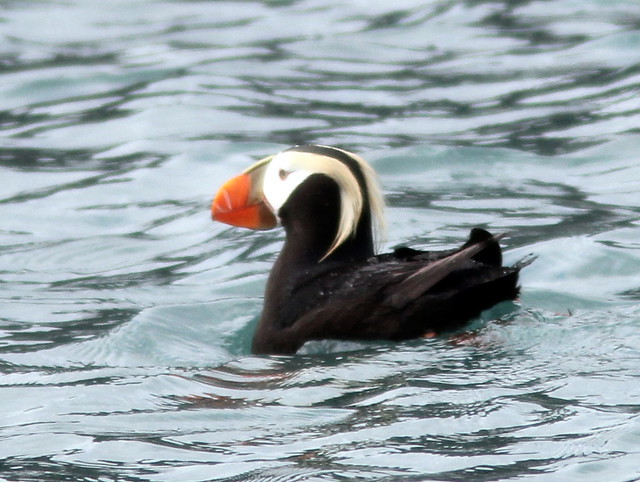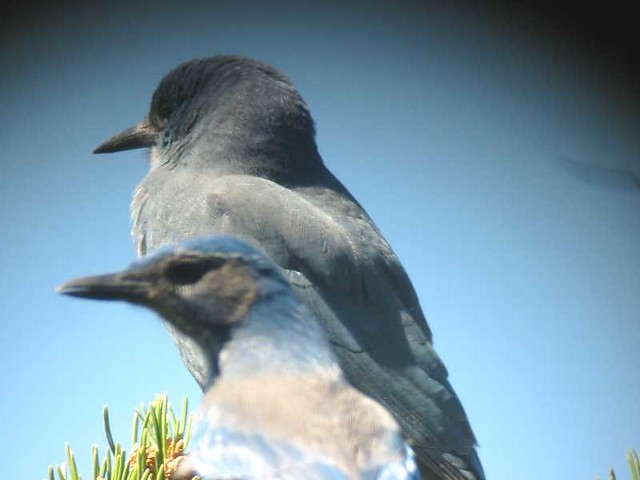Posted by: Ken @ 12:49 pm
This stork showed up on our back lawn yesterday afternoon. It was so close that I had to back up to fit its entire image into my viewfinder.
This year there have been very few Wood Storks on our lake or the surrounding wetlands. After a banner nesting season in 2009, when dozens of immature storks visited us, we have seen only adults, and fewer each year. See my updated blog “Struggling Storks.”
It is interesting to see how the stork rests one leg by grasping the other by its “knee.”
Our local birding patch cannot really be called a “hotspot,” or a place to find a rarity, and it does not have unusually large concentrations of resident and migratory birds. Because we visit it frequently, nearly every morning, we have sighted a total of 109 species, 18 of them warblers. In truth, at the peak of migration the greatest number of warbler species tallied at one time has been 7 or 8, and there are have been many mornings when we failed to see a single one.
Warblers are much more abundant at several locations that are fairly nearby, but we are “homebodies” who prefer to get in our exercise and also fit an hour or so of birding into our morning schedule. An advantage we enjoy is that there are few tall trees in our wetland, which is officially called the West Broward Water Conservation Area. While this limits the habitat suitable for warblers and other migrant and resident birds, it does bring them down to eye level. Birders who visit prime warbler sighting areas and spend hours looking up into the tops of tall trees often are afflicted with “warbler neck.”
This past week, after the great day we described in the previous post we set out with high expectation and were not disappointed.
Common Yellowthroats breed locally, but their numbers are expanded by migrants passing through. This is an adult male.
This immature male still has not developed a full mask.
The demure female yellowthroat is no less beautiful.
Prairie Warblers also nest locally.
Several Ovenbirds appeared.
Ovenbirds commonly forage on the ground.
Although we have been birding this area since 2004, this was our first local sighting of a Worm-eating Warbler, and my first-ever photograph of one.
As the skies were overcast these photos did not turn out very well, but it was a thrill to capture its image. Without flash and at ISO 800 with the aperture locked at f/5.6, the 1/100 second exposures were blurred by the bird’s movement. There is a rule that wildlife exposure speed should at least be the inverse of the focal length of my 420mm system, or 1/420 second.
The skies cleared and a few Black-and-white Warblers appeared. They are very active as they climb along the larger branches in search of insects hidden in the bark.
There followed one of my most enjoyable few minutes since taking up bird photography. A group of 4 -6 Yellow-throated Warblers suddenly flew in. One was so tame that I had to switch my lens to a macro setting because the bird approached nearer than 3 meters.
While I have photographed this species previously, it was the first time I had ever seen them in our local patch.
I won’t bore you with any more, but suffice it to say that I took over 50 photos of them, many up close and personal.
Other birds of note included this Red-eyed Vireo.
The Northern Cardinals have just about finished their post-breeding molt into fresh plumage. Note the new tail feathers growing in.
A Great Crested Flycatcher peered out through the branches.
Two pairs of Common Ground-Doves feasted on the fruit of a nearby Florida Trema.
A Loggerhead Shrike perched atop a shrub.
A Green Heron eyed me from its vantage point along the canal.
A migrating Brown Thrasher scolded me with a loud “chack!”
The next morning brought in Palm Warblers, which will spend their winter locally, becoming so common that locals call them “Florida Sparrows.”
A Great Egret cast a nice reflection.
Lantana blossomed…
…and flowers of the Arrowhead thrust up in a swampy area.
Several small butterflies were active, including this Monk Skipper, native to Cuba, sipping nectar from a Ligustrum.
Another nondescript skipper is Horace’s Duskywing.
The Fiery Skipper is more distinctively marked.
By mid-morning I had to keep a close eye on the weather and confined my wandering to an area only a quarter of a mile from home. Storm clouds built up over the 196th Avenue canal that borders our subdivision. Looking south, our birding patch extends to the north and south along the right (west) side of the canal
This was the view heading home along the unfinished extension of Miramar Parkway as it curves to the east.
Posted by: Ken @ 8:33 am
We returned to our south Florida home one week ago, and it has rained every day. The weather allowed us only two short forays into the wetlands adjacent to our home.
This morning’s sunrise was typical. Light rain was dappling the surface of our lake and a thunderstorm was moving in from the southeast (right) as I took this photo from our patio.
Local birders have been reporting decent numbers of warblers migrating through our area, so they were my main objective on our first morning out. Along the unpaved road that leads into the wetlands, I got a quick shot of a Great Egret.
An adult Bald Eagle flew over towards our subdivision from the direction of its nesting area about a mile away in Pembroke Pines.
After Mary Lou and I finished the “aerobic” portion of our walk along the gravel road, I stayed behind at the place that I formerly called the “Fake Hammock.” It is now only the ghost of its former glory days, as all the large trees were cut down by recreational RV users who built a fire pit in the center of the small clump of trees and shrubs.
After an absence of over six weeks, I was disappointed to find that the clear shady area under the canopy where I used to sit and wait for the birds is now in full sunlight with grasses and vines up above my chest. Since I did not have my snake boots I did not venture inside the “hammock.” Instead I birded its margins. The morning light was nearly perfect.
The first warbler to appear was an American Redstart.
An inquisitive Blue-gray Gnatcatcher approached quite closely.
Four Brown Thrashers had gathered to feast on the berries of a Trema tree nearby.
I had trouble identifying this flycatcher as it seemed rather small, suggesting it was an Alder Flycatcher rather than an Eastern Wood-Pewee. However, its peaked head and slight hook at the end of its bill confirmed it was the latter species. Click on the image for more photos and discussion of its identification.
This male Northern Cardinal has nearly finished its post-breeding molt and looks good in his fresh coat.
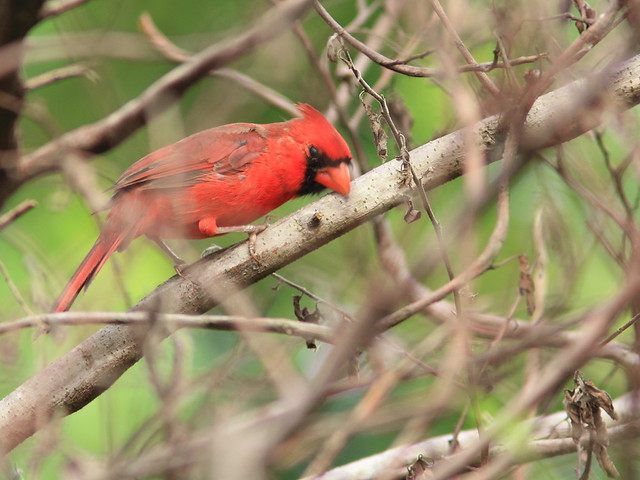
On my second visit to the hammock area I saw more warblers. A Northern Parula made its first appearance.
Prairie Warblers provided some splendid views. Here is a male.
The female Prairie Warbler has more subdued markings, but I liked this pose.
A Northern Waterthrush paid a brief visit. I was lucky to catch it through the foliage.
A female Common Yellowthroat was likewise quite elusive.
When I was about to leave, I was startled a very loud splash in the nearby canal. I spun around to catch a parting shot of the unsuccessful fisherman, an Osprey.
Not to be overlooked was this Band-winged Dragonlet…
…a Zebra heliconian…
…and a Halloween Pennant.
Posted by: Ken @ 5:45 am
This family of Sandhill Cranes visited our front yard several times over the past month. The two colts lack the red on their foreheads.
Earlier this month, the weather radar showed that migration had continued into the morning. Our condo is located a few miles east of the Interstate 88 highway logo on the maps, below. With visions in our heads of warblers dropping out of the sky, Mary Lou and I set out to visit Bliss Woods Forest Preserve, a 10 minute drive from our second home in NE Illinois.
This was the Chicago radar display on September 6, 2012, at 5:33 AM. Skies were clear and there was only a slight breeze from the southwest.
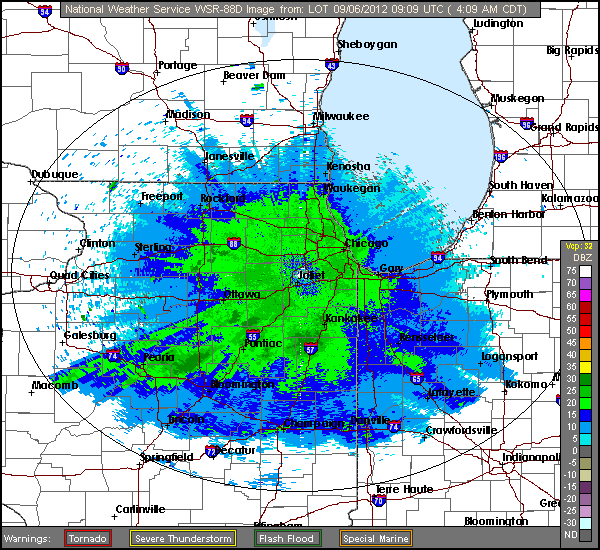
The velocity image shows that targets were moving from north to south despite the prevailing wind pattern– quite a biomass of migrating birds.
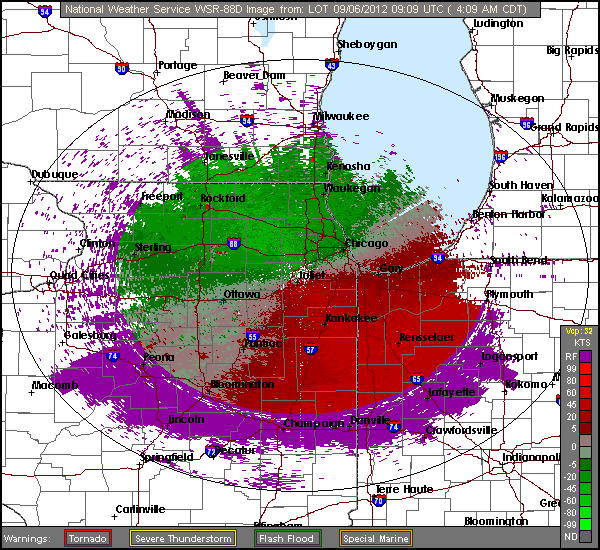
Although we had heard about good birding in this small preserve, this was to be our first visit. We found a nice variety of habitats, from patches of prairie to mature hardwood stands.
A creek crosses the bottomlands.
Trails are paved and provide access to some nice viewing areas, such as this savannah.
We immediately found a flock of about a dozen warblers, mostly Black-throated Greens. They weaved in and out of sight among the leaves of a large oak tree.
I captured this poor photo of a Magnolia Warbler.
There were also several American Redstarts flitting about, almost impossible to catch in the camera’s eye.
The movements of redstarts are totally unpredictable. Many of my shots merely showed empty branches…
…or a blur.
Although I had previously seen Golden-winged Warblers, they provided me with my first images of the species.
Among the non-warblers, my first-photographed Philadelphia Vireo was a prized find.
This view shows the dark marks that extend through and in front of the Philadelphia Vireo’s eye, which along with its brighter yellow underparts, distinguish it from the more common Warbling Vireo.
Another fairly uncommon migrant bird was this Olive-sided Flycatcher, roosting high atop the bare branches of a dead tree.
We saw several southbound Swainson’s Thrushes.
An immature Rose-breasted Grosbeak posed nicely.
A Gray Catbird showed off its rust-colored crissum.
A Hairy Woodpecker, distinguished from the smaller Downy Woodpecker by its relatively longer bill and lack of barring on its outer tail feathers, foraged on the trunk of a small tree.
Posted by: Ken @ 1:52 pm
Since taking up photography I have become a more sloppy birder. A pair of binoculars is the best tool to identify a small bird weaving in and out of sight among the branches. If you plan to take a photo of a bird it helps to know what kind it is. Sometimes I have gotten killer binocular views of birds, only to have them disappear the moment I reached for my camera. As a result of such experiences, I often give in to the temptation to raise my camera first.
Although my 420 mm telephoto lens system (an EF300mm f/4L IS USM coupled with a 1.4x extender) provides approximately the same magnification as 8 power binoculars, its viewfinder offers a far less adequate image. In the first place, the field of view is restricted by the camera’s telescopic lens, making it more difficult to find and track the movement of an active target. The view is not nearly as bright as that provided by binoculars. Further, the camera’s image is only in two dimensions, so it is impossible to “see around” the leaves and twigs that may obstruct important identifying features of a small bird. The camera’s auto-focus feature presents an additional challenge, as it will sometimes pick out a little twig that you failed to see in front of the bird, turning the intended target into nothing but a blur.
Case in point. This week, in Kane County, Illinois, I photographed a Philadelphia Vireo for the first time, but did not know this until after I got home. I had heard its song, which I find hard to distinguish from that of the Red-eyed vireo, and then caught a glimpse of what I thought to be just another Warbling Vireo. After taking a few hasty shots, I returned to my search for migrating warblers.
The “Gilvus” group of vireos includes these three rather similar species. Here is a recent photo of the locally common Warbling Vireo, Vireo gilvus.
Take a close look at my next photo, of the overlooked Philadelphia Vireo, Vireo philadelphicus. It is quite similar to the Warbling vireo, but shows a brighter yellow breast and the black line through its eye extends out in front of the eye. I noticed this only after seeing its image displayed on the computer screen.
Bell’s Vireo, Vireo bellii, also included in the Gilvus group, has more subdued plumage. Its normal range is the Central and Western US, but I found this one in Florida, also in my “Fake Hammock.”
I thought vireos got their name from their songs, which are usually rather brief and disconnected phrases that sometimes sound like “vireo… vir-de-lee-o… viree-ee…” However, In Latin, “vireo” means “to be green.”
Although all vireos display a more or less greenish cast to their plumage, the “Green-backed” group is aptly named. It includes the Red-eyed Vireo, Vireo olivaceus.
The Black-whiskered Vireo, Vireo altiloquus, resembles a Red-eyed with a penciled Fu Manchu mustache. This was my first sighting and only photo opportunity, in what I called the “Fake Hammock” near our South Florida home.
Members of the “Eye-ringed” group of vireos appear to be wearing spectacles. This is a Blue-headed Vireo, Vireo solitarius, photographed in direct sunlight, which accents the cool blue color of its head and legs. In poor light the head often looks more gray, as the blue is due to scattering of blue light by the structure of its feathers, not a blue pigment. Unlike the bright blue iridescence of peacocks and grackles, which is caused by reflection of light, the structural blue color is present under nearly all lighting conditions.
The White-eyed Vireo, Vireo griseus, is common as a breeder and winter visitor in South Florida.
Here is a Yellow-throated Vireo, Vireo flavifrons (my poor, and only photo), taken a couple of weeks ago near my NE Illinois home.
Vireos I have seen but not yet photographed include:
- Yellow-green Vireo, Vireo flavoviridis (sometimes included in V. olivaceus), seen once in the Lower Rio Grande Valley.
- Cassin’s Vireo, Vireo cassinii, quite common breeder near our former home in New Mexco.
- Hutton’s Vireo, Vireo huttoni, which I first saw in California. It looks like a robust version of a Ruby-crowned Kinglet “on steroids.”
- Plumbeous Vireo, Vireo plumbeus, which breeds in the mountains of New Mexico.
- Gray Vireo, Vireo vicinior, a hard to find little vireo that bred locally in dry scrub-land such as found on the grounds of Kirtland Air Force Base in Albuquerque, where I enjoyed my first and only sighting. It is a bird of conservation concern because of small population size and loss of its favored habitat.
- Black-capped Vireo, Vireo atricapillus of Southwestern Texas, and
- Thick-billed Vireo, Vireo crassirostris, a West Indies bird that sometimes shows up in southern Florida.
Posted by: Ken @ 10:33 pm
It seems that when I go out into the field on a single-minded quest for a target bird, more often than not I am disappointed. For the past couple of weeks, I have wanted to see a warbler. Any old warbler would do. Until I took up photography a few years ago, “see” meant exactly that. More correctly it meant “see and identify.” I must admit that by “see,” I now mean “photograph.”
In the case of migrating warblers in the fall, this sharply narrows down the criteria, even with the help of 10X glasses and a supple neck. Trees are full of leaves and warblers prefer to be high up and on the wrong side of both. Now I have a stiff neck and my cataractous eyes force me to depend upon automatic focus if I want a clear picture.
Of course, some photos seem to be gifts from the “warbler gods.” Last week, this female Chestnut-sided Warbler posed in perfect light, so close by that I had to back off to focus on her. (This image is cropped directly from the RAW file without any other editing)
Why do I now have this compulsion to package birds’ images into files that consist of nothing but ones and zeroes? The world does not need any more bird photos. Birds must be the most photographed natural objects other than babies and waterfalls. If I want to see a great bird picture I can just Google for it.
It should be enough for me to simply take in the great beauty of plumage, song and movement. And it always was, until a 300 millimeter image stabilized lens attached to a 1.4x extender and a progression of three generations of digital single-lens reflex cameras with a monopod and accessory pack were added to the weight I carry into the field. Why do I wish I were carrying this burden when an eagle flies over as I am walking to the supermarket? It is just another eagle, and pretty far away at that.
I will not attempt to answer my rhetorical questions except to say that photography has added an important dimension to my appreciation of birds and nature. For one thing, it has allowed me to start my life list of bird sightings all over. I don’t tabulate them or keep a spreadsheet, but I copy them into a set on FLICKR. My “Life List of Bird Photos” contains 261 images, including some omissions and some duplicates that I must weed out.
Many of the images are poor, and I plan to replace them with better shots if I get them and remember to go back to the photo set. It is less than half way to the total on my ABA area list of species sighted. Of course it sets out an impossible challenge, as I am running out of time to try to match both lists. But the quest goes on, to find new species to add.
As I write this, I realize I have omitted this Yellow-breasted Chat.
Binoculars can somewhat compensate for back-lighting that causes my camera to produce monochromatic silhouettes. With binoculars it is possible to piece together momentary glimpses of a bird as moves through the branches. On the other hand, photos sometimes reveal details missed in the real-time sighting. More than once, I found a “new” species after I looked at the photos back home. That is what happened when I took the above photo of the chat. I heard a strange call in the dense shrubbery, but all I saw was a Prairie Warbler. Only after I got home did I find that one of my shots of a partially obscured yellow blob actually revealed the chat. (Click on photos for more details and additional views).
My first “real” sightings are seared into memory. As a kid, I did not need binoculars to witness the courtship of a pair of Rose-breasted Grosbeaks. From the seclusion of a thicket, I watched the male display on the ground in an open area, singing all the while. And so on– my first Common Redpolls, Red-headed Woodpeckers, Peregrine Falcons (”Duck Hawks”)… Now, I have a second chance to experience the thrill of “discovering” an old friend, and a few of my new species have been simultaneous additions to both the sightings and the photo lists.
My most recent new “Life Bird Photographed” was this Yellow-throated Vireo, seen only a few days ago.
New additions to the list usually reflect my travels to more distant places. Among other recent entries were a Rufous-crowned Sparrow, seen last November in the Albuquerque’s eastern foothills…
…and on the same day nearby, a Black-throated Sparrow.
A spring visit to Alaska in 2011 added 16 newly photographed birds, but only one was also a true “lifer,” this Red-faced Cormorant on Katchimak Bay.
I had seen Pelagic Cormorants before, but this one was special because it provided my first image of this species.
Pigeon Guillemots seemed to be engaged in friendly banter on Gull Island in Katchimak Bay.

Though I had seen both common puffin species previously, I was able to get my first photos of a Tufted Puffin on Gull Island.
A Horned Puffin splattered across the bow of our sightseeing boat on Resurrection Bay, out of Seward.
This pair of courting Mew Gulls in Denali National Park, shot through the side window of a bus, was one of my favorite new additions to the list.
One of the earliest entries on my life list of photographed birds antedates my first DSLR. It is a “two-for” taken from behind the window of our former home in New Mexico with a 2 megapixel point-and-shoot through my Kowa scope– a Pinyon Jay and a Western Scrub-Jay.
Visit ROSYFINCH RAMBLINGS













